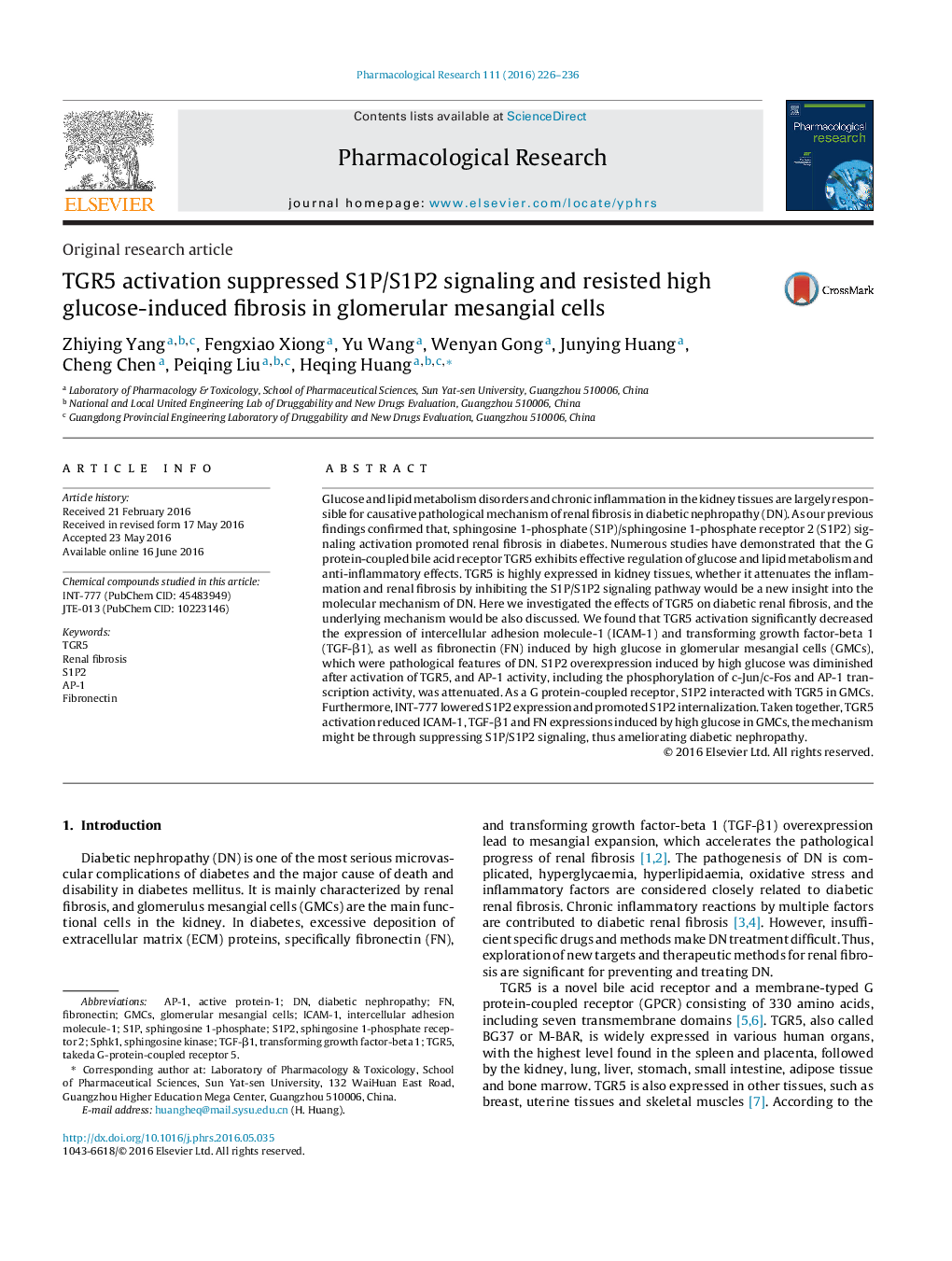| کد مقاله | کد نشریه | سال انتشار | مقاله انگلیسی | نسخه تمام متن |
|---|---|---|---|---|
| 5843434 | 1560829 | 2016 | 11 صفحه PDF | دانلود رایگان |

Glucose and lipid metabolism disorders and chronic inflammation in the kidney tissues are largely responsible for causative pathological mechanism of renal fibrosis in diabetic nephropathy (DN). As our previous findings confirmed that, sphingosine 1-phosphate (S1P)/sphingosine 1-phosphate receptor 2 (S1P2) signaling activation promoted renal fibrosis in diabetes. Numerous studies have demonstrated that the G protein-coupled bile acid receptor TGR5 exhibits effective regulation of glucose and lipid metabolism and anti-inflammatory effects. TGR5 is highly expressed in kidney tissues, whether it attenuates the inflammation and renal fibrosis by inhibiting the S1P/S1P2 signaling pathway would be a new insight into the molecular mechanism of DN. Here we investigated the effects of TGR5 on diabetic renal fibrosis, and the underlying mechanism would be also discussed. We found that TGR5 activation significantly decreased the expression of intercellular adhesion molecule-1 (ICAM-1) and transforming growth factor-beta 1 (TGF-β1), as well as fibronectin (FN) induced by high glucose in glomerular mesangial cells (GMCs), which were pathological features of DN. S1P2 overexpression induced by high glucose was diminished after activation of TGR5, and AP-1 activity, including the phosphorylation of c-Jun/c-Fos and AP-1 transcription activity, was attenuated. As a G protein-coupled receptor, S1P2 interacted with TGR5 in GMCs. Furthermore, INT-777 lowered S1P2 expression and promoted S1P2 internalization. Taken together, TGR5 activation reduced ICAM-1, TGF-β1 and FN expressions induced by high glucose in GMCs, the mechanism might be through suppressing S1P/S1P2 signaling, thus ameliorating diabetic nephropathy.
136
Journal: Pharmacological Research - Volume 111, September 2016, Pages 226-236